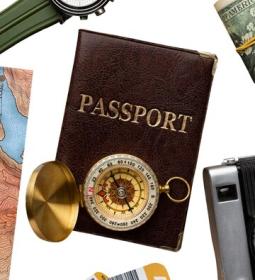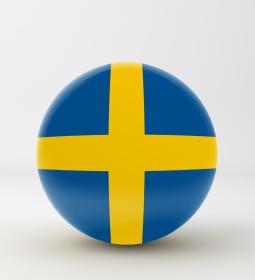Australia is a country of extraordinary fauna, beautiful, at times dangerous and unique. Locals are used to living next to poisonous spiders, snakes, insects, they are used to sharks in the ocean around this remote continent, and crocodiles in rivers. But what about tourists who are not used to such an abundance of dangerous animals and the proximity of wild nature?
In fact, you shouldn't worry so much: you will not encounter any dangers in the cities of Australia, and if you visit one of the local national parks, then the guides and guides know about the peculiarities of flora and fauna and will help to avoid the dangers. We will tell you about the main dangers from the animal world that await you in Australia, and what to do if the contact turns out to be too close.
Dangerous animals of Australia
- Blue-ringed octopuses live on coral reefs and bodies of water from Australia to Japan. Within 5-10 minutes, the victim of the bite may develop paresthesias, numbness, muscle weakness, difficulty breathing, swallowing. At the moment, there is no antidote, the victim can only wait it out. The danger of an octopus is in its size - an adult only reaches the size of a golf ball. Throughout history, only three deaths have been reported: two in Australia, one in Singapore.
- The Australian box jellyfish has a powerful venom enclosed in 15 tentacles, which can be up to 3 meters long. The poison is not released after touching it, but as a reaction to a chemical on the victim's skin. Over the past 100 years, the box jellyfish has been responsible for more than 60 deaths, with the victim drowning in shock.
- The cassowary is the largest bird in Australia: its "growth" ranges from 1.5 to 2 meters. Although they are frugivorous (fruit eaters) and do not attack humans, they are very territorial birds. Most attacks on humans are due to a person's desire to feed the bird. The last recorded human death from a cassowary was in 1926.
- Australia is home to many spiders , many of which are poisonous. Sydney Funnel-web contains poison that is one of the most toxic to humans. The bite of this venomous megalomorph spider should be treated in the same way as a snake bite. Although this spider is responsible for 13 reported deaths in New South Wales, there have been no deaths since the development of the antidote in 1981.
- The saltwater crocodile is considered one of the most dangerous animals in Australia, an aggressive, territorial animal, and also the largest reptile in the world in terms of mass. The weight of the animal can exceed 1000 kg, the length is 5 meters. A crocodile in Australia kills an average of one person per year.
- Over the past 100 years (according to 2014), there were only 298 provoked shark attacks - 204 people were injured, 56 got off with fright, and 38 were fatal. Surfers and scuba divers who choose deserted places are most often attacked.
- In Australia, there are about 140 species of land and 32 species of sea snakes, of which about 100 are venomous, and 12 of them are fatal. Eastern, western brown snakes are responsible for most of the reported deaths: their venom causes paralysis and bleeding disorders, but medical centers have an antidote.
- About 200 species of stingrays live in freshwater bodies of water and oceans: from smooth (over 4 meters in length) to blue spotted (up to 70 cm in length). By nature, they are not aggressive, rather curious, playful, but a collision with him can be dangerous. Throughout history, only 2 deaths have been recorded from a meeting with a stingray.
- Stonefish are the world's most venomous fish that lurk in Australian waters. Thanks to their excellent camouflage abilities, they are quite difficult to notice until they are stepped on. Their venom causes severe pain, heart failure and, if left untreated, death. In the late 1950s, an antidote was invented.
- The textile cone snail with a glossy shell with a pattern ranging from light to dark brown or yellowish is one of the most venomous cone snail species found in Australia. The snail uses conotoxin to kill its prey, the harpoon-like tooth injects poison into the victim through microscopic needles powerful enough to not only penetrate human skin, but through gloves or wetsuits. One snail contains enough poison to kill 60 adults.
Poisonous plants in Australia
There are several well-known toxic plant species that humans should avoid.
- Black beans (Castanospermum australe), a native of Queensland and New South Wales, or "Moreton Bay chestnut", grows in moist soil along river banks and mountain slopes in coastal rainforests. Between March and May, it produces large pods filled with toxic seeds. Poisoning causes vomiting, diarrhea and can be serious if not sought medical attention.
- The strychnine tree is native to Southeast Asia and Australia. Small orange-colored fruits with neurotoxic seeds cause seizures, paralysis and even death. The flowers and bark of the tree can also be poisonous, since they contain the alkaloids strychnine, brucine.
- Angel Trumpets are medium-sized trees or shrubs with strong thin trunks and red, white, orange, pink flowers. Plants are very toxic, especially their leaves, as well as seeds rich in alkaloids (scopolamine, hyoscyamine). If ingested, it can cause diarrhea, confusion, migraine, paralysis, even death.
- Deadly nightshade and its berries are very poisonous: they contain tropane alkaloids that cause hysteria, hallucinations, erratic behavior, delirium. Swallowing one leaf or about 20 berries can be fatal for adults, and smaller doses can do similar harm to children.
- Oleander is highly toxic. People who come into contact with the plant may experience mild skin irritation, but if any part of the plant is swallowed, especially by children, there is a greater risk (although the leaves of the plant are so bitter that it is unlikely that a child will eat them whole). Breathing in vapors or cooking oleander plants on fire poses many health risks.
- Milky mangroves (Excoecaria agallocha) - the milky sap of this plant is very poisonous, it can cause temporary blindness if it gets into the eyes of a person.
- Euphorbia - the juice of these plants is called "latex" and is very poisonous. Contact can cause severe inflammation of the eyes, nose or mouth, even blindness.
- The nettle family includes many species of grasses, shrubs, vines, small trees, including the stinging nettle (Urtica), which is native to Australia (Laportea). Many species have prickly hairs that can cause severe pain.
How to avoid danger in Australia
The main requirement is not to go off the route outlined by the guide! Tourists are offered traditional excursions that run through the safest sections. If you have to travel to national parks, wear closed shoes, long pants and observe safety precautions:
- Avoid dense thickets
- Look under your feet
- Keep away from animals
- Do not swim in unequipped areas
- Do not drive in the dark
- Do not leave your shoes outside
- Use mosquito nets.
Rules of conduct on the water - dangerous factors
- Fresh wound on the body
- Turbid and deep water
- Night
- Bathing with jewelry
- Entering the water with pets
- Fishing spots (lure attracts predators).
First aid in a dangerous situation
Plant bites or injuries are common in Australia, the main thing is to quickly get the victim to the hospital. You can slow down the action of the poison if you follow several rules:
- Do not move the part of the body where the bite was committed.
- Apply a tight bandage above the bite site, slowing blood flow.
- Secure the immobilizer tire.
- Record the exact time of the bite and dressing.
In fact, if you observe safety measures in Australia, it is not so dangerous to rest: the main thing is not to leave safe routes and to obey the instructions of the guides.











